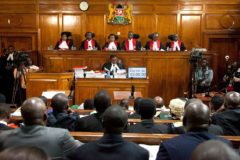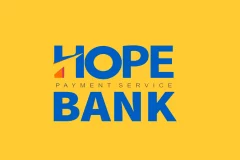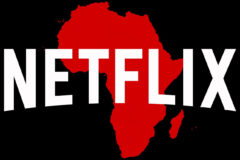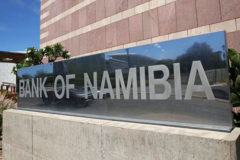
The Next Wave provides a futuristic analysis of BizTech and innovation in Africa. Subscribe here to get it directly in your inbox on Sundays at 3 PM (WAT).
Happy new year. January is going to be a very long month, or a very normal one, depending on how much money you saved from Detty December. Either way, the new year is another chance for any currency you’re doing life with, physical or digital, to prove its worth.
Speaking of digital currencies, last year, we discussed how they could work in Africa. Today, we will discuss the future of the Africa Union’s yet unrealised single currency project in the face of digital currencies.
Africa’s attempt at achieving economic and currency integration goes back many, many years.
In 2018, the continent’s heads of government brokered the African Continental Free Trade Area (AfCFTA) agreement, the world’s biggest trade agreement since the World Trade Organisation (WTO). AfCFTA is an agreement to create a single market for African countries to trade goods and services seamlessly and deepen economic integration on the continent. The agreement is signed by all member states of the AU—except Eritrea, which prefers to pursue regional rather than continent-wide integration—and is projected to have the potential to increase Africa’s income by $450 billion and lift 30 million people out of extreme poverty by 2035.

In July 2020, the Secretary General of the AfCFTA Secretariat, Wamkele Mene, predicted that the benefits promised by the trade agreement would lead to the realisation of a common currency for Africa—a project that has been in the works since 1991.
But is Mene right? Is a single currency for Africa feasible today any more than it was 5 years ago, prior to the AfCFTA agreement?
It has been 31 years since the AU conceived the idea of a single currency for Africa. Some progress—or maybe too little—has been made concerning this, with the setup of the Pan-African Payment and Settlement System (PAPSS), which makes it easy to exchange multiple African currencies. PAPSS is still in the pilot phase in 6 countries and is set to officially launch in Accra, Ghana on January 13—this Thursday.
Coming down to a region within the continent, in West Africa, the adoption of the eco as a single currency, proposed by the Economic Community of West African States (ECOWAS), has not materialised either, its launch having been postponed 4 times since it was conceived in 2003.
Why is Africa’s single currency looking like a pipe dream?
Partner Message

Welcome millions of new customers from across the world by accepting payments for your business by accepting Discover Global Network cards on Flutterwave.
Create a Flutterwave account for FREE, here.
AfCFTA is part of the AU’s plan to make Africa resemble the European Union (EU) one day. And a single currency stands at the core of this project. The EU’s euro was introduced 20 years ago, and it is currently used by more than 340 million people across 19 EU countries, with 27.6 billion euro banknotes in circulation for a value of about €1.5 trillion. It is currently the second most widely-used currency in the world, behind the US dollar. Unsurprisingly, the EU has attributed the prosperity European countries have experienced in recent years to the euro. It therefore makes sense that Africa is eyeing such mouth-watering gains for the continent.
But creating a single currency is not easy. It would require the establishment of a central monetary system for different countries—a regime that, given the varied economic needs of countries, may be deemed unsuitable for some member states.
In fact, discussions around the euro go as far back as the 1960s, but it wasn’t until 1999 that the currency was finally introduced. And even then, only 11 countries adopted it. Now, that number is 19; despite 20 years of the currency’s existence, all 27 countries in the EU are yet to fully adopt it.
Countries might prefer digital currencies to single currencies

The recent creation of central bank digital currencies (CBDCs) in Nigeria and Ghana—with Rwanda, South Africa, Tanzania, and Kenya in the research stages—may further delay the materialisation of a single currency for Africa. The date for the launch of ECOWAS’s eco was January 2020, but that deadline wasn’t met; instead, key players in the region, Ghana and Nigeria, have developed their own CBDCs.
It is important to note that Nigeria is crucial to the creation of the eco not only because it is the region’s biggest country, but also because it is the only country in West Africa with a banknote printer and mint. The West African giant has expended massive resources into the development of its CBDC, the eNaira, perhaps a demonstration of its lack of faith in a continental currency ever happening.
CBDCs can ease cross-border payments, but only if they are built with interoperability in mind. A paper on cross-border CBDCs, published by the Bank for International Settlements (BIS), in conjunction with the International Monetary Fund (IMF) and World Bank, urges collaboration among countries in designing CBDCs to enable cross-border payments.
Some counties have ongoing collaborations for cross-border CBDCs—Project Jasper–Ubin, between Canada and Singapore in 2019; Project Jura, the recent trial between France and Switzerland; Project Inthanon–LionRock, between Thailand and Hong Kong; Project mCBDC Bridge, between Thailand, Hong Kong, China and the UAE; and Project Aber, between the United Arab Emirates (UAE) and Saudi Arabia.
Global payments giant, Visa, developed a new concept called the “Universal Payment Channel” (UPC), which acts like a hub, interconnecting multiple blockchain networks and allowing for secure transfer of digital currencies. It will allow, for example, your cousin from Canada to send USDC, a stablecoin, to you in Nigeria and, by the time it gets to the CBDC wallet, it would have been converted automatically to the eNaira.
Already, cryptocurrencies are viable options for cross-border payments in Africa, bypassing the hassle that comes with transacting across over 40 different currencies and their corresponding diverse financial systems.
It’s time for the AU and ECOWAS to rethink their approach—a physical single currency—and shift their focus to developing a single digital currency, like the EU is doing. Or, better still, African countries must ensure that the digital version of their currencies can easily interact with each other, across borders.
From the Cabal
Africa’s trade finance transactions are worth $1.1 trillion yearly. To facilitate these transactions, however, the continent relies on foreign technology, which often does not take into consideration the peculiarities of African markets. That is why an indigenous trade finance technology firm, Union Systems, is creating tech solutions that match the needs of African markets. You can read more about it here.
Have a great week.
Thank you for reading The Next Wave. Please share today’s edition with your network on WhatsApp, Telegram and other platforms, and reply to this email to let us know what we can be better at.
Subscribe to our TC Daily Newsletter to receive all the technology and business stories you need each weekday at 7 AM (WAT).
Follow TechCabal on Twitter, Instagram, Facebook, and LinkedIn to stay engaged in our real-time conversations on tech and innovation in Africa.
Sultan Quadri, Staff Writer, TechCabal.






















